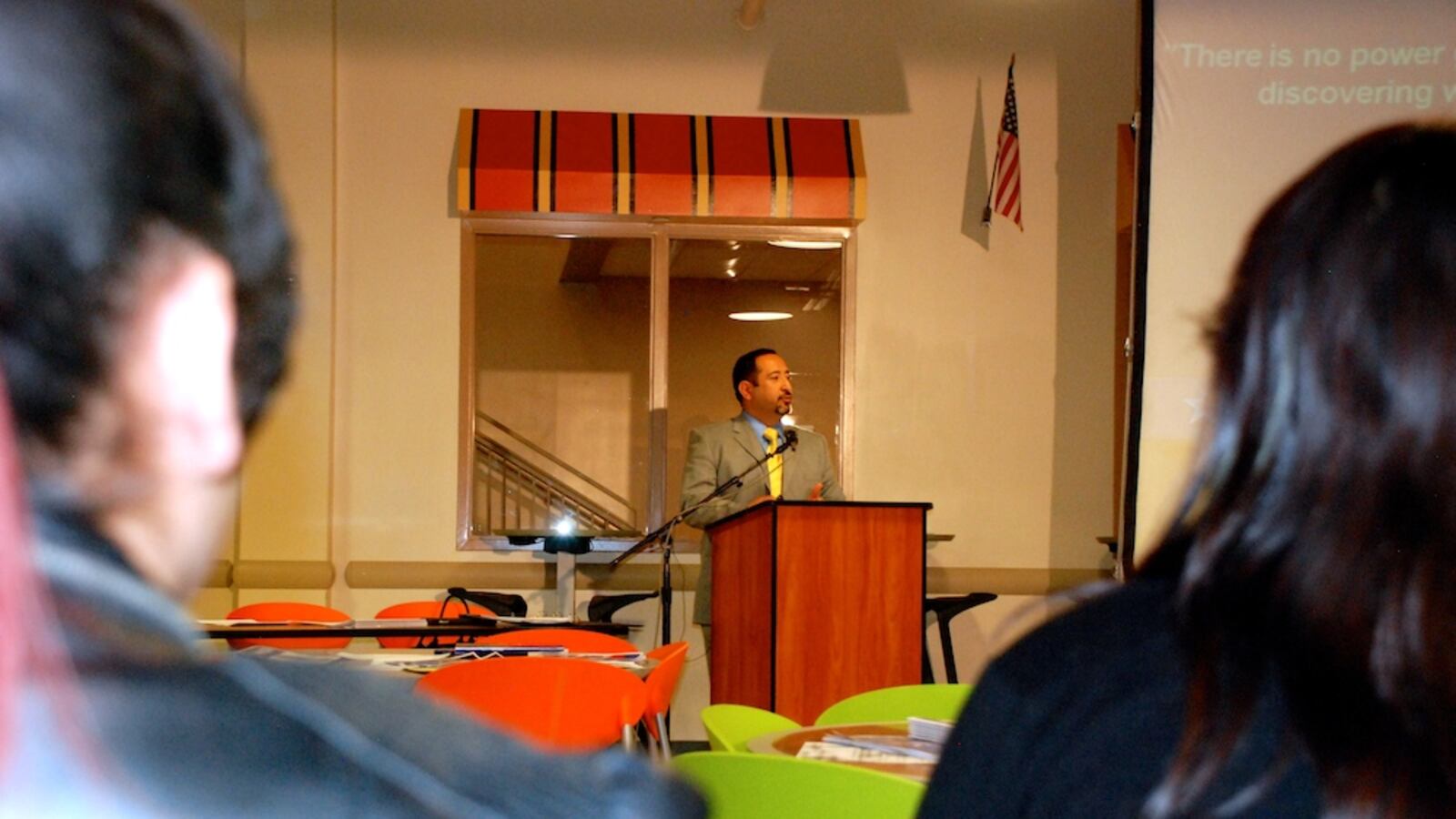After years of struggling, Adams 14 officials celebrated pulling itself out of the red zone on state accountability measures and turned to the task of re-establishing trust with parents and civic leaders Thursday night.
But more work still needs to be done, they said, to avert drastic intervention from the state.
The first step in that plan: holding a community-wide meeting of stakeholders for the first time in anyone’s memory that aimed to foster stronger relationships with members of those groups.
Commerce City school officials hope by proving they’ve put in the initial work to boost academic achievement, the community will follow. They want the community’s help in creating the necessary political and social environment to push the district over the finish line as it races to beat the Colorado “accountability clock.”
“There are so many wonderful groups doing great things in the community, but it feels fragmented,” said Deputy Superintendent Kandy Steel. “We wanted to bring everyone together to talk about how we can work together to help out children.”
Specifically, the district hopes to pass a bond override issue in order to build a new “super” middle school and finance other academic programs and support services it believes will be essential to complete the turnaround work. The district’s last middle school was built in 1953. While the district did pass a construction bond in 2006 for a new high school, the last override, or general tax increase on the Commerce City community was 1996.
In attendance at the meeting were about 100 teachers, parents and representatives from various nonprofits such as the Rotary Club, Community Health Services, Boys and Girls Club and the alumni committee.
The last year it posted any sort of academic growth worthy of praise was in 2007, before the state began rating schools.
Two years ago Adams 14, which serves mostly poor minority students and a large English language learning population, was among the five lowest performing school districts. Among districts of similar size and demographics, it was the lowest, said Superintendent Pat Sanchez.
But that all changed this year, when Adams 14 posted enough academic growth to climb out of “turnaround” status and be accredited by the state as a “priority improvement” district. Districts that are accredited as either “turnaround” or “priority improvement” have five years to improve their students’ test scores or face the loss of accreditation from the state. Adams 14 is one of about a dozen districts nearing the end of that timeline.
“We’ll know in about 18 months whether we’ve beat the clock,” Sanchez said after the community forum. “I’m betting we’re going to be sliding sideways across the finish line.”
Both Sanchez and Steel were hired 18 months ago. Their vision is for the district to be accredited with distinction, the state’s highest recognition for school districts, by 2020.
“We’re no longer going to aim for the middle,” Sanchez said.
Since being hired, Sanchez’s work has been focused mostly on data-driven instruction and equity work. He’s also been an outspoken critic of the state’s accountability framework, but said he agrees with the state’s premise students deserve a quality education.
He told the audience the district rating mechanism is meant to hold adults accountable, but the loss of accreditation would only punish children.
“Why is this work critical? Because it doesn’t hurt the adults or the organization, it hurts our kids,” he said.
No school district has lost its accreditation, but at an October meeting of the State Board of Education, Colorado Department of Education officials said they believe students who graduate from an unaccredited district may face hurdles in applying for colleges and scholarships. Districts may also lose out in federal grants and aid.
Teachers union president and Dupont Elementary School teacher Barb McDowell said after the forum teachers are invested in the district’s future.
“The fact is, the teachers who have stayed here are committed to the children, to the community,” she said. “These are the kids we want to teach.”
A 17-year veteran of Adams 14, McDowell said the district of today is drastically different then when she started.
“You could get away with stuff [back then],” she said. “But expectations have grown. It’s night and day.”
Nearly every Commerce City elected official attended Thursday’s meeting including Mayor Sean Ford, an Adams City High School alum.
“How we support our schools, districts, our teachers and our students is critical to the long-term success of our community,” he said.
He vowed the city would “do what we can do,” to help Adams 14 meet its goals.
The meeting was just one of many the district plans to host through the next year, said Deputy Superintendent Steele. One parent, Renee Lovato, hopes future meetings will have more detail about the work the district is doing at individual schools. She considered most of the information surface details.
“It’s scary,” she said being a parent in a turnaround district. “You wonder if you should stick it out and hope things improve or send your child to a neighboring district. When it’s your kid, it’s takes things to a whole other level.”
Sanchez, whom Lovato praised for transparency and hardwork, said he’s excited to raise awareness of the district’s turnaround process and how it’s turned the tide and create an agreement with the community.
“At the end of the day, there is an urgency,” Sanchez said after the meeting. “We need to end the predictability [of low test scores] that comes with educating students of color. The education our kids have been getting is horrible.”

